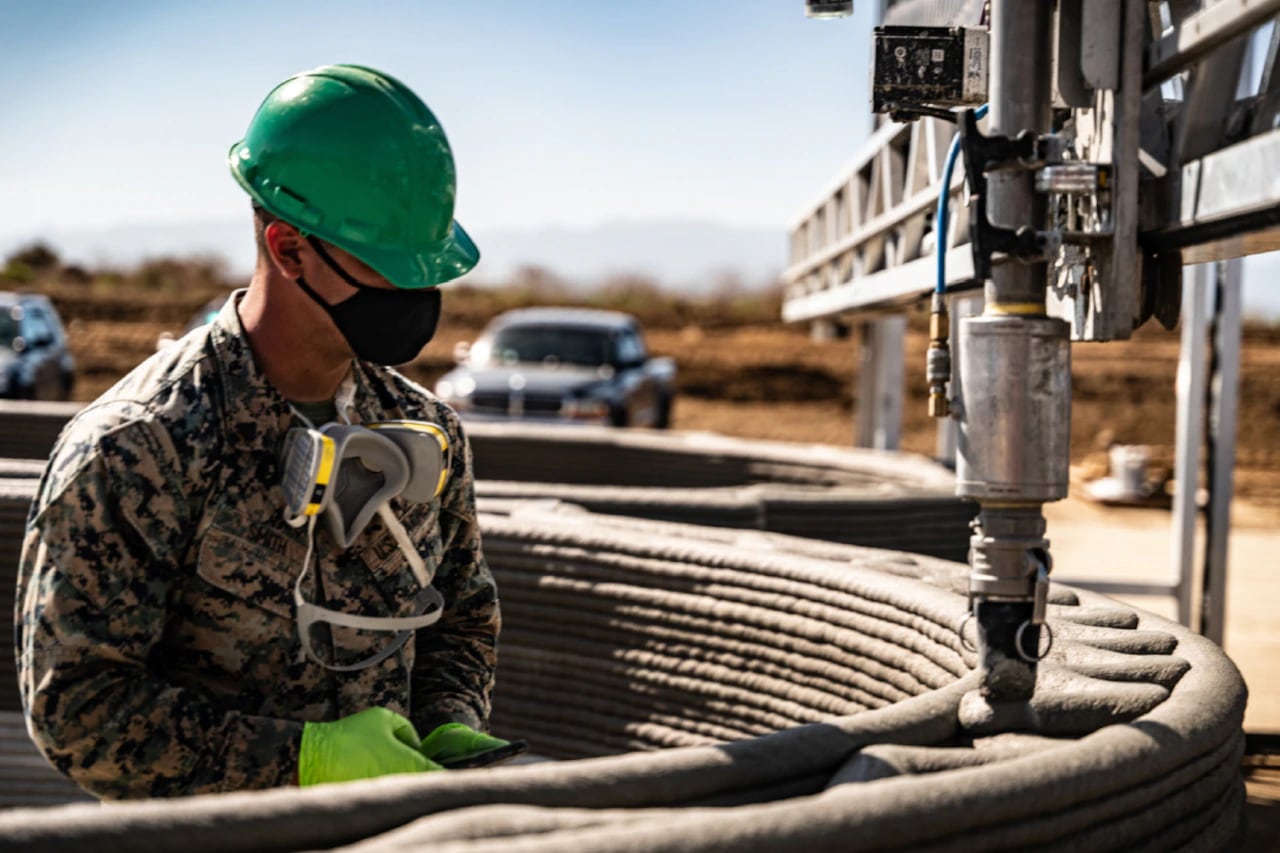In the words of the great Ray Kinsella, “If you build it, he will come.”
Or, in the case of barracks, if you 3D print it, soldiers will be forced to live in it.
Partnering with ICON, a private construction technology company in Texas, the Defense Department is 3D-printing the largest structures in the Western Hemisphere, to serve as transient housing for service members.
Made out of ICON’s proprietary “Lavacrete,” this printable high-strength concrete has a compressive strength of 2,000 to 3,500 pounds per square inch and can reportedly withstand extreme weather, and, presumably, the stupidity of Saturday night barracks shenanigans.
The material is also supposed to be more long-lasting than traditional construction materials. Although it’s unclear whether the material underwent tests involving the antics of drunk junior enlisted, it should withstand natural disasters and, hopefully, the raucous parties that go with them.
“Constructing facilities using this cutting-edge technology saves labor costs, reduces planning time, and increases the speed of construction of future facilities,” Army Lt. Gen. Doug Gabram, commander of U.S. Army Installation Management Command said.
However, the Army didn’t say whether or not the barracks would come with the standard-issue asbestos, cockroaches and black mold or if those will grow there later.
While the 5,700 square foot structures will certainly be an engineering feat once completed in approximately 10 months, one can’t help but wonder what comes next in the world of military 3D printing projects if this one is successful.
“We are looking at other ways to use this innovative technique for rapid construction of other types of facilities beyond barracks,” Gabram added.
One can only hope that the Defense Innovation Unit and Army Engineer Research and Development Center will turn their printing efforts toward better chow hall food — plastic or otherwise.
“We are proud to collaborate with the U.S. Army and continue our partnership with DIU to see diverse use cases for ICON’s technology across the DOD and to deliver resilient, comfortable 3D-printed barracks for soldiers at Fort Bliss,” Brendan O’Donoghue, vice president of public sector at ICON, said.
Perhaps it will be a paradise — pure bliss?
Rachel is a Marine Corps veteran and a master's candidate at New York University's Business & Economic Reporting program.
Sarah Sicard is a Senior Editor with Military Times. She previously served as the Digitial Editor of Military Times and the Army Times Editor. Other work can be found at National Defense Magazine, Task & Purpose, and Defense News.



